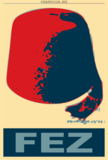Why is it good to be wealthy? You live longer, have better care, and access to the best in technology and health services. The rich are different than the rest of us. A series being published in the NYT is drawing out the implications of class on American life. We should not only read what these divergences are we must respond to them in a way that does not enrich the top 1%. George, are you listening?
Jean G. Miele's heart attack happened on a sidewalk in Midtown Manhattan last May. He was walking back to work along Third Avenue with two colleagues after a several-hundred-dollar sushi lunch. There was the distant rumble of heartburn, the ominous tingle of perspiration. Then Mr. Miele, an architect, collapsed onto a concrete planter in a cold sweat.
Will L. Wilson's heart attack came four days earlier in the bedroom of his brownstone in Bedford-Stuyvesant in Brooklyn. He had been regaling his fiancée with the details of an all-you-can-eat dinner he was beginning to regret. Mr. Wilson, a Consolidated Edison office worker, was feeling a little bloated. He flopped onto the bed. Then came a searing sensation, like a hot iron deep inside his chest.
Ewa Rynczak Gora's first signs of trouble came in her rented room in the noisy shadow of the Brooklyn-Queens Expressway. It was the Fourth of July. Ms. Gora, a Polish-born housekeeper, was playing bridge. Suddenly she was sweating, stifling an urge to vomit. She told her husband not to call an ambulance; it would cost too much. Instead, she tried a home remedy: salt water, a double dose of hypertension pills and a glass of vodka.
Architect, utility worker, maid: heart attack is the great leveler, and in those first fearful moments, three New Yorkers with little in common faced a single, common threat. But in the months that followed, their experiences diverged. Social class - that elusive combination of income, education, occupation and wealth - played a powerful role in Mr. Miele's, Mr. Wilson's and Ms. Gora's struggles to recover.
Class informed everything from the circumstances of their heart attacks to the emergency care each received, the households they returned to and the jobs they hoped to resume. It shaped their understanding of their illness, the support they got from their families, their relationships with their doctors. It helped define their ability to change their lives and shaped their odds of getting better.
Class is a potent force in health and longevity in the United States. The more education and income people have, the less likely they are to have and die of heart disease, strokes, diabetes and many types of cancer. Upper-middle-class Americans live longer and in better health than middle-class Americans, who live longer and better than those at the bottom. And the gaps are widening, say people who have researched social factors in health.
As advances in medicine and disease prevention have increased life expectancy in the United States, the benefits have disproportionately gone to people with education, money, good jobs and connections. They are almost invariably in the best position to learn new information early, modify their behavior, take advantage of the latest treatments and have the cost covered by insurance.
 Rising Hegemon
Rising Hegemon
No comments:
Post a Comment